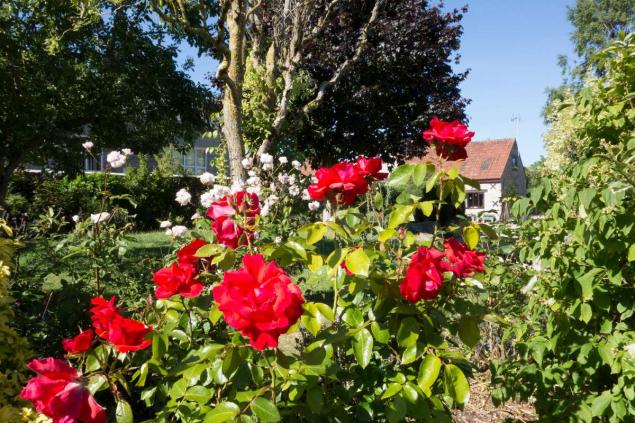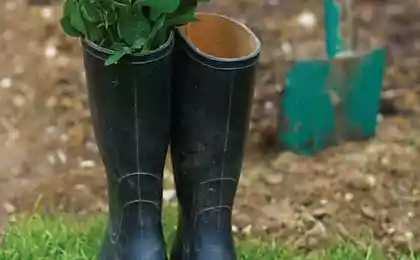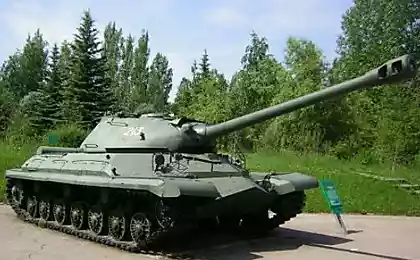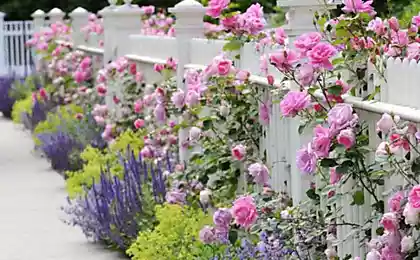149
Experienced gardener Fedor told how to properly trim the rose immediately after flowering, so that it blooms again
The main question for gardeners now is how to prune a rose in the summer after flowering. The garden queens are slowly fading, so it’s time to take care of them. In addition to proper and competent pruning, you need to take into account a couple of important points. Let's talk about everything in order.

Editorial "Site" Today he shares with you simple rules for the care of roses after flowering. If you do not neglect them, the queen of flowers will be healthy and will please you with repeated flowering.
The first thing to do after flowering roses is pruning them. This applies to all varieties of roses, especially those that bloom several times a season. After flowering, the plant directs all its forces to the ripening of seeds. However, we are not going to breed, so the inflorescences need to be removed. After that, all forces will be directed to further flowering and development of the plant.

It's important to cut the roses properly. Many novice gardeners remove only wilted inflorescences, but this is not enough. If the rose blooms again, the kidney will begin to form from the last leaf. She'll grow up frail and small. To avoid this, the rose must be cut much lower. You need to leave three full leaves (which consist of 5 leaves) at the bottom, and cut everything else. By the way, cropped stems can be used to reproduce roses with cuttings.
Don't be afraid to cut the rose short. On the contrary, this will make the second wave of flowering no less lush than the first. It is also worth immediately carrying out sanitary pruning and getting rid of broken, dried and poorly developing shoots. The flower perfectly tolerates summer pruning. Then he will give you a nice look and a new flower.

After pruning, things in the garden do not end. Another important procedure is loosening. This is especially important if the summer is rainy. Due to excess moisture, the soil is covered with crust. Through it, oxygen passes poorly and the development of the rose is inhibited. Well loosen the ground under the bushes, it will help it grow better.

Then the soil can be fed. During flowering, the plant spent a lot of energy, so you need to restore them. The best option is to alternate root and extraroot feeding. A solution of ash can be used as an extraroot. It has a lot of potassium, phosphorus and calcium, which are so necessary for the plant. For cooking, pour 2 glasses of ash 1 liter of boiling water, leave overnight. In the morning, strain, add 10 liters of cold water and spray the plant.

In addition to potassium and phosphorus, bushes need nitrogen to accelerate growth. For this, you can use a solution of urea: 1 tbsp. l. per bucket of water. If you do not want to mess with homemade fertilizers, you can use any ready-made complexes.

Now you know how to cut a rose in the summer and what else to do with it after flowering. All gardeners know that roses require special attention. Since you've decided to put her in your garden, you need to know everything about taking care of her. Then it will give you a lush and long flowering!

Editorial "Site" Today he shares with you simple rules for the care of roses after flowering. If you do not neglect them, the queen of flowers will be healthy and will please you with repeated flowering.
The first thing to do after flowering roses is pruning them. This applies to all varieties of roses, especially those that bloom several times a season. After flowering, the plant directs all its forces to the ripening of seeds. However, we are not going to breed, so the inflorescences need to be removed. After that, all forces will be directed to further flowering and development of the plant.

It's important to cut the roses properly. Many novice gardeners remove only wilted inflorescences, but this is not enough. If the rose blooms again, the kidney will begin to form from the last leaf. She'll grow up frail and small. To avoid this, the rose must be cut much lower. You need to leave three full leaves (which consist of 5 leaves) at the bottom, and cut everything else. By the way, cropped stems can be used to reproduce roses with cuttings.
Don't be afraid to cut the rose short. On the contrary, this will make the second wave of flowering no less lush than the first. It is also worth immediately carrying out sanitary pruning and getting rid of broken, dried and poorly developing shoots. The flower perfectly tolerates summer pruning. Then he will give you a nice look and a new flower.

After pruning, things in the garden do not end. Another important procedure is loosening. This is especially important if the summer is rainy. Due to excess moisture, the soil is covered with crust. Through it, oxygen passes poorly and the development of the rose is inhibited. Well loosen the ground under the bushes, it will help it grow better.

Then the soil can be fed. During flowering, the plant spent a lot of energy, so you need to restore them. The best option is to alternate root and extraroot feeding. A solution of ash can be used as an extraroot. It has a lot of potassium, phosphorus and calcium, which are so necessary for the plant. For cooking, pour 2 glasses of ash 1 liter of boiling water, leave overnight. In the morning, strain, add 10 liters of cold water and spray the plant.

In addition to potassium and phosphorus, bushes need nitrogen to accelerate growth. For this, you can use a solution of urea: 1 tbsp. l. per bucket of water. If you do not want to mess with homemade fertilizers, you can use any ready-made complexes.

Now you know how to cut a rose in the summer and what else to do with it after flowering. All gardeners know that roses require special attention. Since you've decided to put her in your garden, you need to know everything about taking care of her. Then it will give you a lush and long flowering!
I do not use salads for winter, I make a blank from baked Bulgarian pepper.
Where Will Bill Gates' $20 Billion Go to Charity?





















